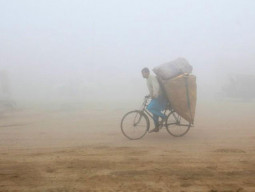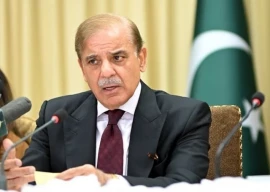
The government has rejected a Rs100 million report on the collapse of the Neelum-Jhelum Hydropower Project tunnel, as it emerged that the report's findings and recommendations were accessible on an artificial intelligence tool – ChatGPT.
An interesting situation emerged on Friday during an official meeting convened to investigate the reasons behind the colossal failure of the Rs500 billion hydropower project and identify those accountable for the tunnel's consecutive collapse.
Instead of taking the responsible people to the task, it was proposed to the government in the meeting on Friday that either the tunnel should be rebuilt with an estimated cost of Rs250 billion to Rs300 billion or it should be repaired by spending around Rs20 billion, according to a cabinet minister.
However, the Wapda officials categorically told the meeting that there was no guarantee that the repaired work could last more than six years, according to the government officials privy to discussions, he added.
The sources said that attempts were being made to protect the Wapda officials and the project management despite serious and continued losses to the infrastructure of the Neelum Jhelum hydropower project.
Planning Minister Ahsan Iqbal had convened the meeting on Friday after Prime Minister Shehbaz Sharif gave clear instructions to hold people accountable for the collapse of the Rs500 billion project.
The senior government functionaries told The Express Tribune that the findings of a managed report were shared, which gave generic reasons for the collapse and the solutions to revive the project.
The planning minister swiftly opened his ChatGPT account, revealing that the report's solutions and findings were readily available through the chatbot. According to two attendees, he took a jab at the experts, remarking that what had cost Rs100 million to uncover was accessible for free.
A planning ministry handout issued after the meeting stated that "the meeting was held to discuss progress and potential solutions for the rehabilitation of the Neelum Jhelum Hydro Power Project".
The project had been built by spending Rs500 billion and it has remained in the news for the wrong reasons. In violation of the engineering guidelines, the project work was done in haste to win political applauses, said a member of the cabinet.
The sources said that Wapda and the bureaucracy of the Ministry of Water Resources said that it was difficult to hold people responsible. However, the cabinet ministers did not agree, arguing that the responsibility could easily be fixed for the major failure.
The planning ministry handout stated that in line with directives issued by the prime minister in May, an International Panel of Experts (IPOE) was engaged to investigate the structural issues affecting the project's Head Race Tunnel (HRT). The panel was tasked with identifying the causes of recent challenges, it added.
The report highlighted areas of the tunnel floor that require attention, alongside recommendations for enhanced ventilation, lighting, and worker safety measures.
The Wapda officials and the experts gave two recommendations to the government to revive the stalled project, according to the meeting participants. They said that the entire tunnel should be rebuilt with an estimated cost of Rs250 billion to Rs300 billion. The second option was to undertake the repair work but it can last only for six years, said the government officials.
The planning minister did not accept both options and directed to get an independent validation of the proposals.
The Wadpa also sought blanket permission to undertake civil works. However, the planning minister refused to entertain such a request without proper documentation.
The planning minister emphasised the importance of a detailed action plan and advised the departments to continue collaborating with independent experts, according to the official handout. A follow-up session is planned for next week to further refine strategies for the project's rehabilitation.
The inception report could only identify generic potential causes of collapse generated by a combination of root causes with a high probability of the presence of unidentified erodible or swelling rocks, hydraulic conditions, insufficient ground support, and absence of concrete lining and long-term decompression of rock mass.
The meeting was told that the mandate of the inception report was to ensure the soonest possible proper access to the head race tunnel and working areas and the inspection of the head tunnel.
The experts sought permission to proceed to install proper ventilation and lighting to protect the health of the workers in the tunnel and facilitate the inspection and identification of tunnel and lining failures. However, there was no agreement on this point in the meeting.
Based on the risk assessment, the consultants were required to develop a preferred tunnel recovery plan and implementation of long-term stabilisation measures.
According to a report by an English daily, an independent panel of experts had raised red flags last year about the headrace tunnel (HRT) of the project, as well as recommending preventive measures that were not implemented before the 969-megawatt project, valued at over Rs500 billion, was shut down in May.
The experts pointed out that independent specialists while investigating the tailrace tunnel (TRT) collapse of July 2022, had pointed out a big geographical fault on the main boundary thrust. The fault that caused the TRT collapse could again be the same in the case of the HRT as well, just below the Jhelum River crossing, according to the media report.









1732549780-0/Speaker-Na-photo-22_04_2014-(1)1732549780-0-270x192.webp)








COMMENTS
Comments are moderated and generally will be posted if they are on-topic and not abusive.
For more information, please see our Comments FAQ